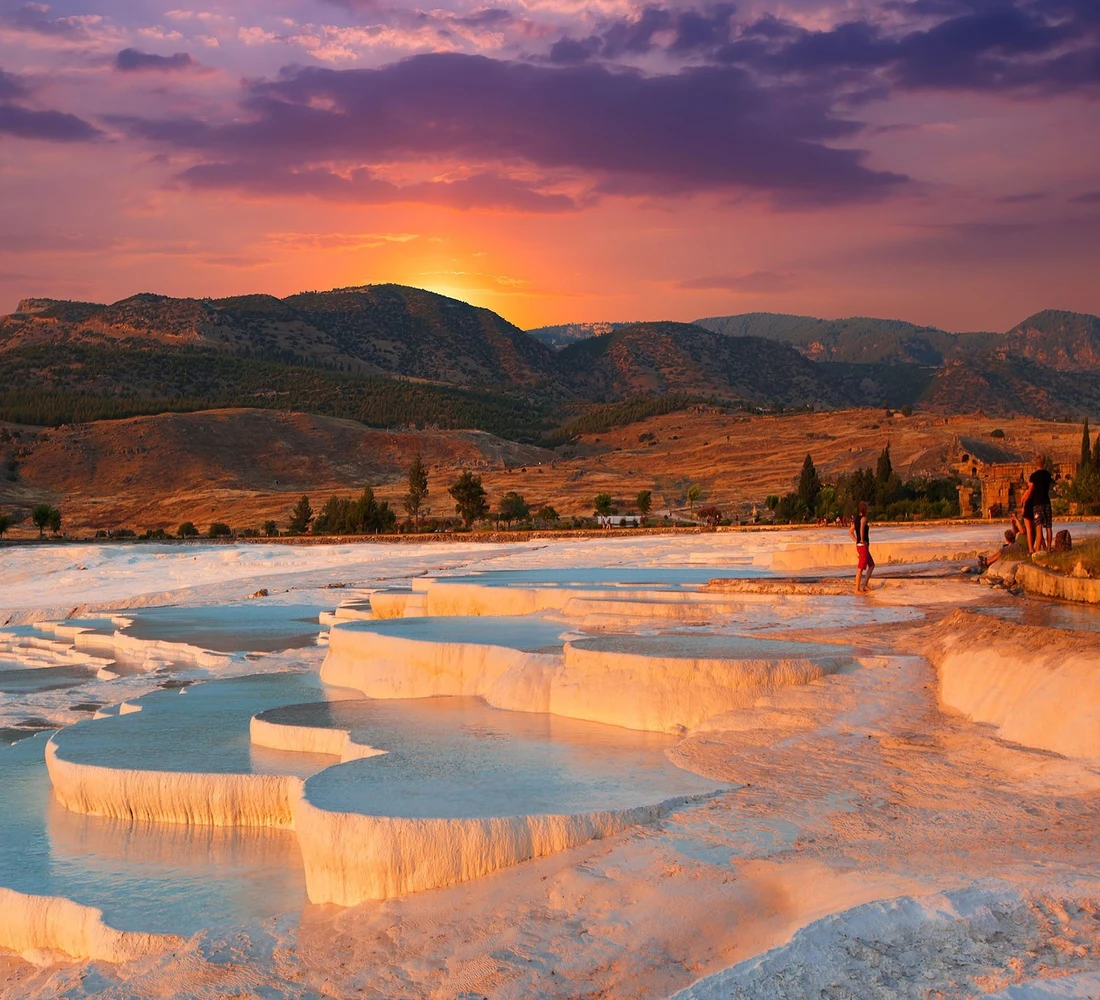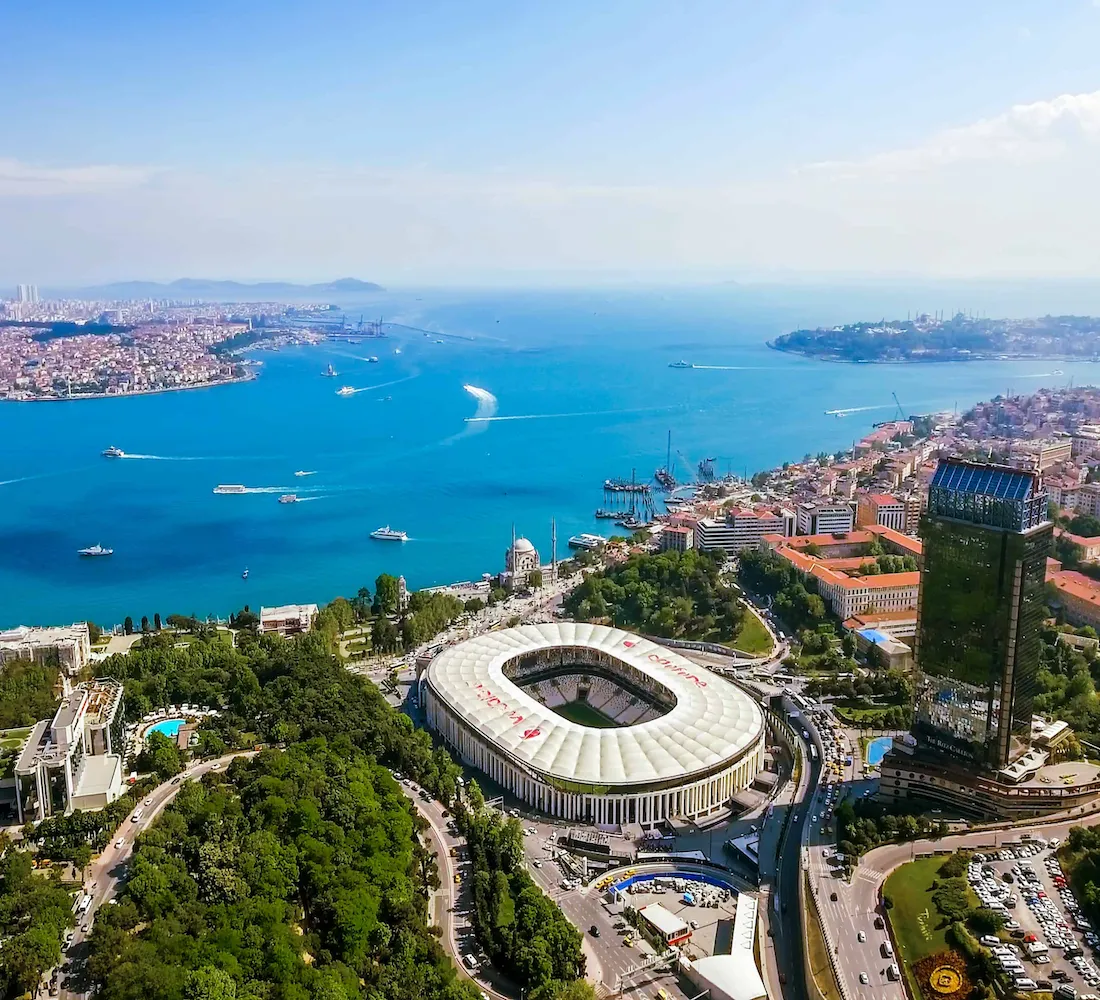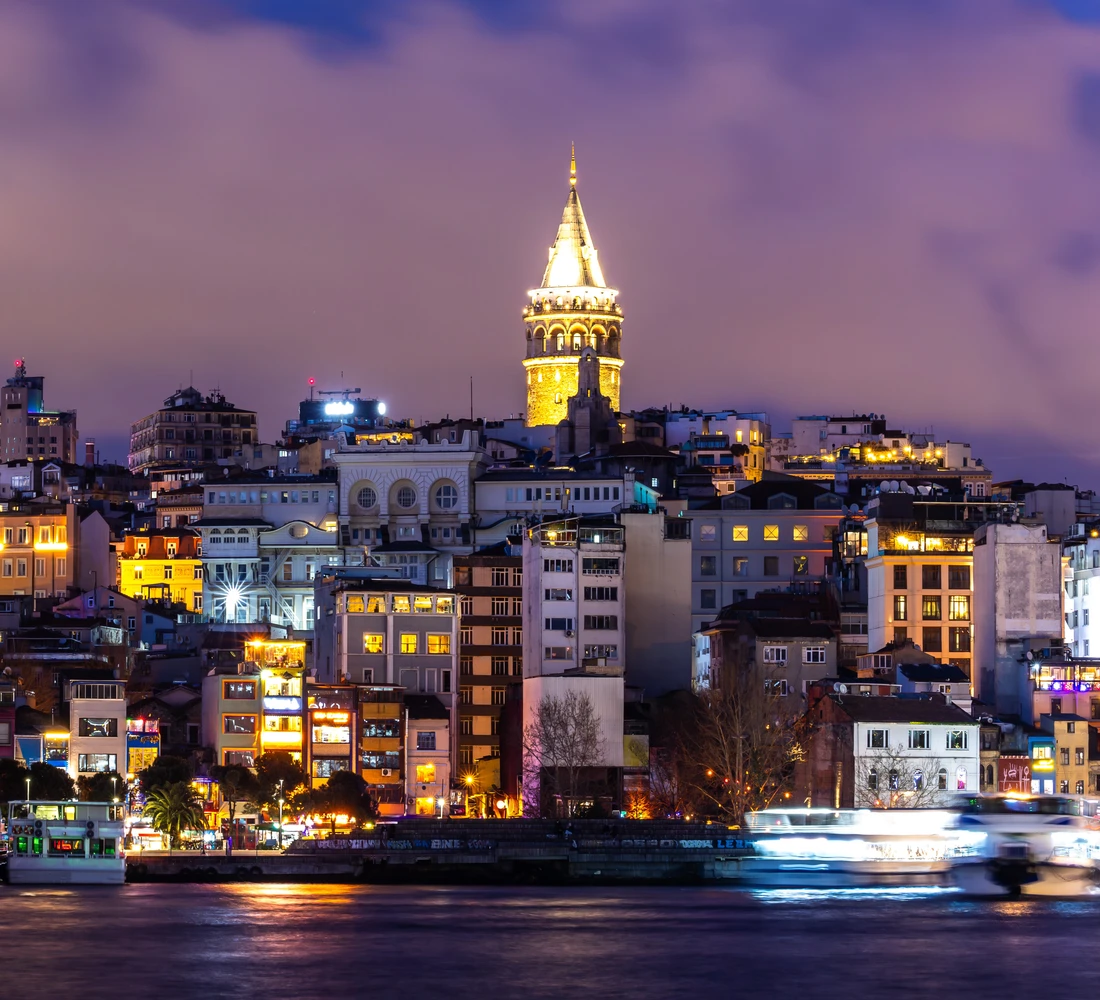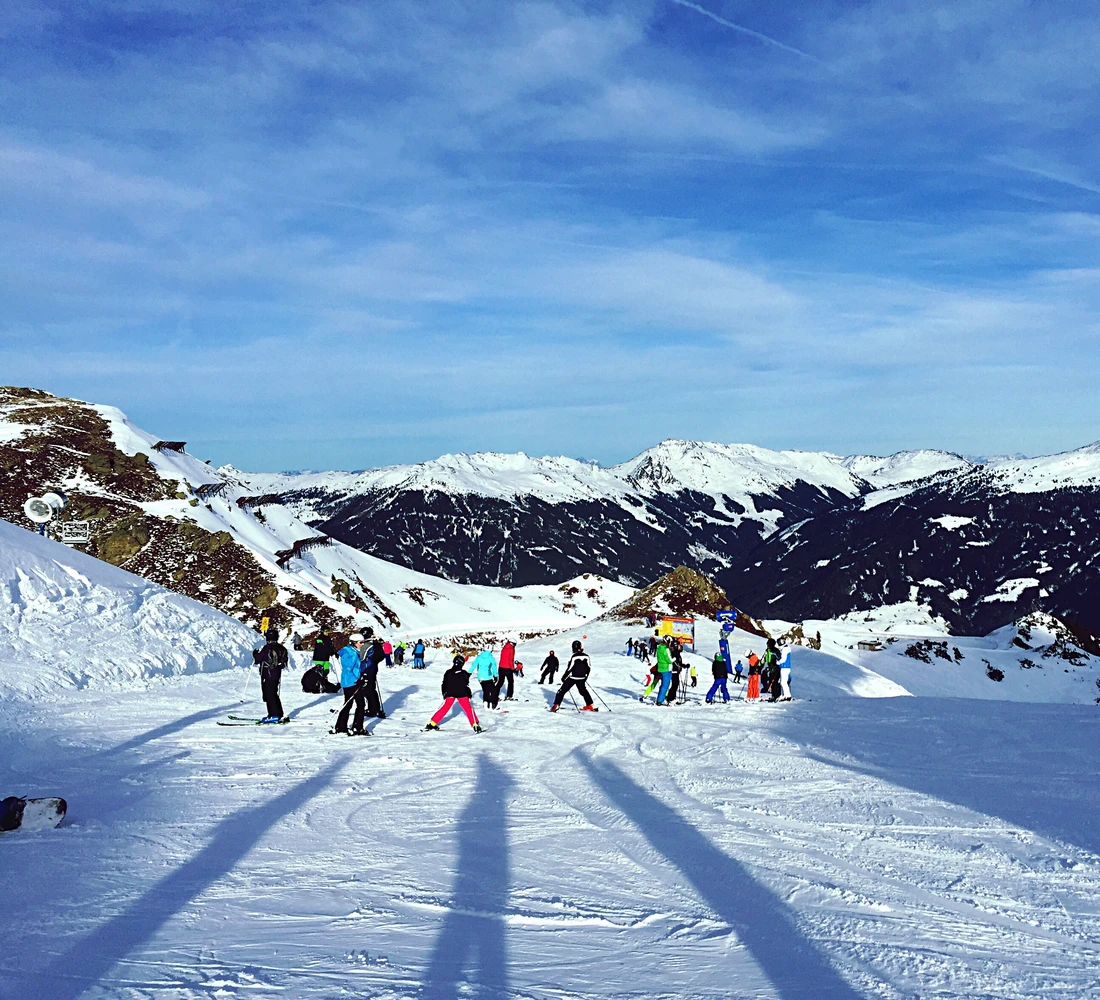A trip to Pamukkale for relaxation in hot spring pools takes you to a magical world of natural beauty and therapeutic benefits.
Located in southwestern Turkey, Pamukkale is famous for its natural springs and mineral-rich waters that flow over white travertine terraces, forming shapes resembling white snow.
In this article, we will cover information about Pamukkale and its cultural history, the best time to visit, relaxation in Pamukkale through bathing in its hot spring pools, the top activities, and the health benefits of Pamukkale's thermal springs.
We will conclude with important tips before traveling to the Pamukkale resort and a comprehensive conclusion highlighting the importance of experiencing relaxation in Pamukkale.
Pamukkale's History and Cultural Significance
Origin and Meaning of the Name Pamukkale
- The word Pamukkale means "Cotton Castle" in Turkish, referring to the white limestone layers that look like clouds of cotton.
- The use of Pamukkale's springs dates back to the Roman era, when they founded the healing city of Hierapolis next to them.
Ancient Ruins of Hierapolis
- The area is home to the ruins of the Roman city of Hierapolis, which includes an amphitheater, theaters, and ancient temples.
- Visitors can combine history and relaxation by visiting the archaeological museum next to the Pamukkale hot spring pools.
Information about Pamukkale and the Geography of the Area
Pamukkale's Geographic Location
- Pamukkale is located about 20 kilometers north of the city of Denizli, at an altitude of 600 meters above sea level.
- The surrounding nature reserve offers hiking experiences amidst hills and springs.
Formation of the Travertine Terraces
- Mineral water flows through the limestone rocks, depositing salts and carbonates, forming white, terraced platforms.
- This unique landscape gives the Pamukkale resort breathtaking beauty and attracts photography enthusiasts.
Best Time to Visit Pamukkale
Spring and Autumn: Ideal Weather
- Spring (April–June) and autumn (September–November) are considered the best times to visit Pamukkale, as temperatures are moderate and the hot springs are at their most appealing.
- The parks open their doors with stunning natural scenery adorning the white terraces with the colors of spring and autumn.
Summer and Winter: Advantages and Challenges
- Summer sees a large influx of tourists, while prices are relatively lower in winter, making the relaxation experience in Pamukkale quieter and more affordable.
- You can experience bathing in Pamukkale even in the cold winter months thanks to the warmth of the mineral water.
Tips Before Traveling to Pamukkale
Necessary Preparations
- Be sure to book your Pamukkale resort early, especially during the best time to visit to avoid crowds.
- Bring light clothing and rubber gloves to walk between the terraces to avoid slipping.
Safety and Fitness Requirements
- It is advisable not to stay for long periods in very hot water to avoid fatigue.
- Consult your doctor if you suffer from high blood pressure or heart disease before relaxing in the Pamukkale hot spring pools.
Relaxation in Pamukkale: A Unique Therapeutic Experience
Benefits of Pamukkale Mineral Water
- Pamukkale's mineral water is rich in calcium, magnesium, and carbonates, and helps improve skin health and reduce inflammation.
- It promotes blood circulation and relieves muscle and joint pain thanks to the heat of the hot springs.
Bathing in Pamukkale
- Some Pamukkale resorts offer relaxation packages that include private baths in open and closed Pamukkale hot spring pools.
- The experience of bathing in Pamukkale gives a feeling of harmony with nature thanks to the surrounding white landscape.
Activities to Do While Visiting Pamukkale
Walking Tour Among the White Terraces
- Enjoying walking barefoot among the Pamukkale springs allows you to feel the delicate solidity of the limestone layers and taste the mineral scents.
- Don't forget to take panoramic photos to document your relaxation experience in Pamukkale.
Exploring Underwater Hierapolis
- The Plutonium and the Cladiustoma Bath are Roman remains that have been transformed into small pools where you can swim next to stone columns.
- Activities in Pamukkale offer an opportunity to learn about Roman civilization and take care of your health at the same time.
Pamukkale Resort: Luxury and Comfort
Spa and Thermal Therapy Services
- The Pamukkale resort includes spa centers that offer therapeutic massage sessions based on Pamukkale's thermal spring waters.
- Traditional mud houses and luxury hotels overlook the terraces, allowing guests to enjoy a stunning view when relaxing in Pamukkale.
Healthy Local Cuisine
- Restaurants in the Pamukkale resort offer healthy Turkish dishes based on fresh vegetables and mineral water to complement the bathing experience in Pamukkale.
- Try the local licorice drink and the gözleme meal with natural herbs.
Other Sports and Recreational Activities
Hot Air Ballooning Over the Terraces
- Seeing the Pamukkale hot spring pools from above is an unforgettable experience, as they look like a white castle in a sea of green plains.
- Hot air ballooning offers a great opportunity for aerial photography.
Mountain Trails and Cycling
- The Pamukkale site is surrounded by mountain trails suitable for walking and cycling, interspersed with small springs and mineral water streams.
- Bicycles can be rented from centers near the Pamukkale springs.
Frequently Asked Questions: Tourism in Pamukkale: Relaxation in Hot Spring Pools
What are the health benefits of Pamukkale mineral water?
Pamukkale's mineral water is rich in calcium, magnesium, and carbonates, promotes skin health, improves blood circulation, and relieves joint and muscle pain.
Can I bathe in the hot spring pools without eating?
It is preferable to have a light meal before bathing in Pamukkale to avoid dizziness or feeling tired from the heat of the water.
What is the best time to visit Pamukkale to avoid crowds?
Avoid the summer peak season and visit in the spring and autumn, which is the best time to visit Pamukkale to enjoy comfort and tranquility.
Are there activities for children in Pamukkale?
Yes, some Pamukkale resorts offer warm pools for children, and they can participate in short walking tours and learn about nature.
How can I get from Denizli to Pamukkale?
It is easily accessible via tourist transport buses or renting a private car, as Pamukkale is about 20 km north of Denizli.
Conclusion: Tourism in Pamukkale: Relaxation in Hot Spring Pools
Tourism in Pamukkale: Relaxation in hot spring pools represents an integrated experience between ancient history, therapeutic benefits, and stunning nature.
Whether you choose to bathe in Pamukkale to benefit from the hot springs or enjoy a relaxation experience in Pamukkale at a luxurious Pamukkale resort, this destination offers more than just a trip; it is a restoration of energy and vitality.
Book your visit today and get ready to discover the beauty of Pamukkale's springs and the secrets of the hot spring pools.






